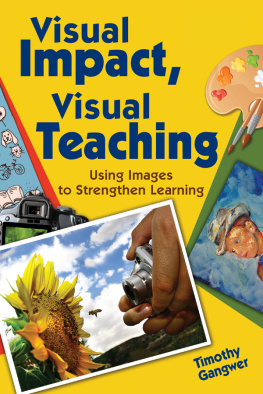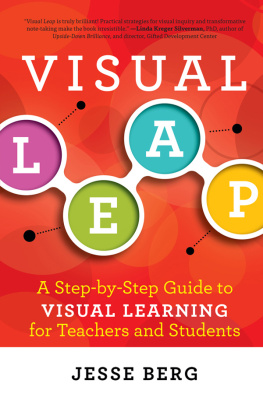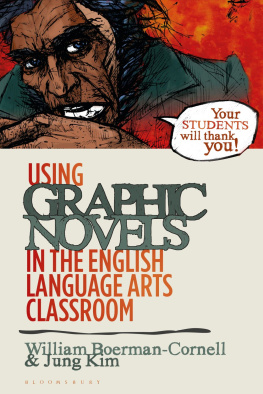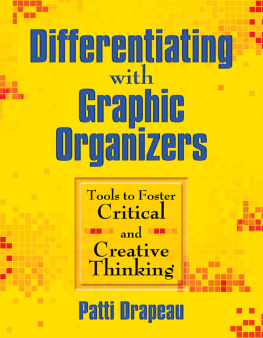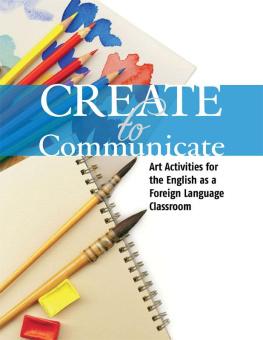For Jack, Shea, Regan, and Riley
It is the function of art to renew our perception. What we are familiar with we cease to see.
Anas Nin
Copyright 2012 by Corwin Press
First Skyhorse Publishing edition 2014
All Rights Reserved. No part of this book may be reproduced in any manner without the express written consent of the publisher, except in the case of brief excerpts in critical reviews or articles. All inquiries should be addressed to Skyhorse Publishing, 307 West 36th Street, 11th Floor, New York, NY 10018.
Skyhorse Publishing books may be purchased in bulk at special discounts for sales promotion, corporate gifts, fund-raising, or educational purposes. Special editions can also be created to specifications. For details, contact the Special Sales Department, Skyhorse Publishing, 307 West 36th Street, 11th Floor, New York, NY 10018 or .
Skyhorse and Skyhorse Publishing are registered trademarks of Skyhorse Publishing, Inc., a Delaware corporation.
Visit our website at www.skyhorsepublishing.com.
10 9 8 7 6 5 4 3 2 1
Library of Congress Cataloging-in-Publication Data is available on file.
ISBN: 978-1-62873-734-9
eISBN: 978-1-62914-088-9
Printed in China
Contents
PART I. LOOKING AT LITERACY IN THE
GRAPHIC NOVEL CLASSROOM
PART II. LOOKING AT MEMOIR IN THE
GRAPHIC NOVEL CLASSROOM
 | Additional materials and resources related to The Graphic Novel Classroom can be found on the companion website. www.corwin.com/graphicnovelclassroom |
List of Classroom Teaching Tools on the Companion Website
Will Eisners Graphic Storytelling and Visual Narrative Assessment Scott McClouds Understanding Comics Study Guide Scott McClouds Understanding Comics Chapter Three Class Activity Understanding Comics Concepts Assessment: Chris Wares Unmasked |
Discussion Prompts for Will Eisners A Contract with God |
Critical Media Literacy Film Response Questions Supplementary Reading Activity: Veiled Threat Persepolis Discussion & Writing Prompts Persepolis: The Story of a Return Test Persepolis Online Discussion Forum Topics Persepolis Analytical Paragraph Writing Quiz Writing Lesson: Model Memoir (Mary Karr) Writing Lesson: Memoir Writing Lesson: Sensory Imagery Worksheet Memoir Composition Projects |
Maus I: My Father Bleeds History Quizzes Maus II : And Here My Troubles Began Group Reading Activities Letter to the Author Assignment |
Danny Fingeroth and Reader Response Superheroes Prompts Discussion and Writing Prompts for Batman Superhero Narrative Composition Projects Paragraph Analysis Writing Lesson |
Four Corners Category Lesson V for Vendetta Quizzes Exploring the Balance of Pictures and Words Activity V for Vendetta Online Discussion Forum Questions Behind the Painted Smile Reader Response Questions V for Vendetta Film Response V for Vendetta Writing Workshop Materials |
Foreword
I n 2007, in the introductory chapter to Building Literacy Connections With Graphic Novels: Page by Page, Panel by Panel , I wrote that Although it is hoped that teachers might be convinced by this collection of essays and similar works to try comics or graphic novels in the classroom, more needs to be written to be sufficiently compelling for the most conservative educators (p. 13). While I do not claim credit for the many comics and literacy articles and books that have been published since then, it is nice to see so many teacher-educators, humanities scholars, librarians, graduate students, and practicing teachers adding to the body of research regarding comics and literacy: a corpus, by the way, that stretches at least as far back as the 1940s. Comics and education are linked and have been for decadescenturies even, if we take into account the connections between contemporary graphica and related forms of sequential art. As I tell my students, Anyone who has sight is a visual learner. Humans are wired to learn visually, and the image-text interface will always be a means of learning, recording, sharing, and knowing. While I know there are still educators reluctant to integrate comics into the curriculum, to embrace fully the utility and history of the image, I take heart in the growing number of educators who see that doing so is no more a fad than blue jeans or movies, both of which were coming into the American consciousness around the same time as comic strips.
With so many folks now mining the intersections of graphica and literacy, though, the question of ethos, or expertise and authority, must be addressed. Where does authority reside in contemporary English language arts (ELA) regarding the integration of comics and graphic novels? Within the data sets of the quantitative researcher? Within the case studies of the qualitatively minded professor? Within the well-written essay of a person deemed by fans of the form as an intelligent expert? The librarian? The teacher? The comics art creator?
To me, the question is highly connected to the more general inquiry of where authority resides now in education as a whole. One of my favorite articles of the past few years addressing this question is Frederick M. Hesss The New Stupid (2008). Hess suggests that while the current emphasis on quantitative data in education and education studies is appropriate, such data may also be misused or overused. Authority, Hess seems to say, doesnt reside just in the numbers. Qualitative researchers and those employing mixed-methods would be quick to agree. Having been trained as a humanities scholar before becoming an English educator, I tend to see data-driven research as just another rhetorical tradition and approach to understanding, with inherent flaws just like any other. However, I often feel that nowadays the English in ELA is being ignored in favor of senses of ethos that devalue humanities and practitioner-based ways of knowing and communicating. For example, I see shifts in the types of articles some journals are publishing, shifts away from the rich humanities traditions that still have an important place for practicing professionals; in comics-and-literacy related work, specifically, sometimes I notice articles passing peer-review without referencing salient examples of preceding work that should be known and referenced; and I see a variety of campuses remarketing themselves as research-focused at the expense of being seen as teaching-centered. While I understand some of the reasons behind these shifts, I often feel like important nuances are being erased from the discourse of contemporary education and from what it means to be involved in a field like English education that should always bridge the humanities and the social sciences.
To be fair, sometimes I see comics creators making blanket statements about learning without any mention of educational theory or figures. I have seen scholars in other fields and comics advocates make claims about teaching and comics as if simply saying it makes it so. Because of these things, I am quick to share with my own students, who I do hope will come to see themselves as teacher-researchers, this maxim: all research is important, and all research is bullshit. That is to say, when it comes to education and ones practice thereof, consider everything as if it has something valid to offer, but always consider that it might have some flawed and limited theses, and try to figure out what those flaws and limits might be. Nothing, not even write-ups of quantitative data, can give us the complete answer: no one source, no one method, no single expertise.



